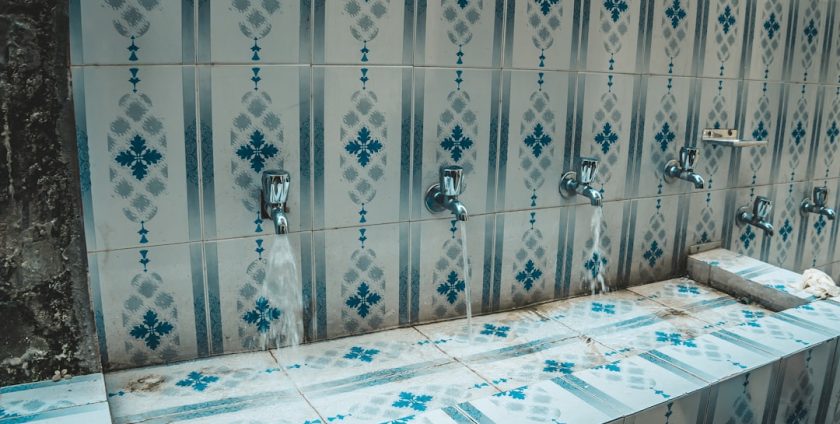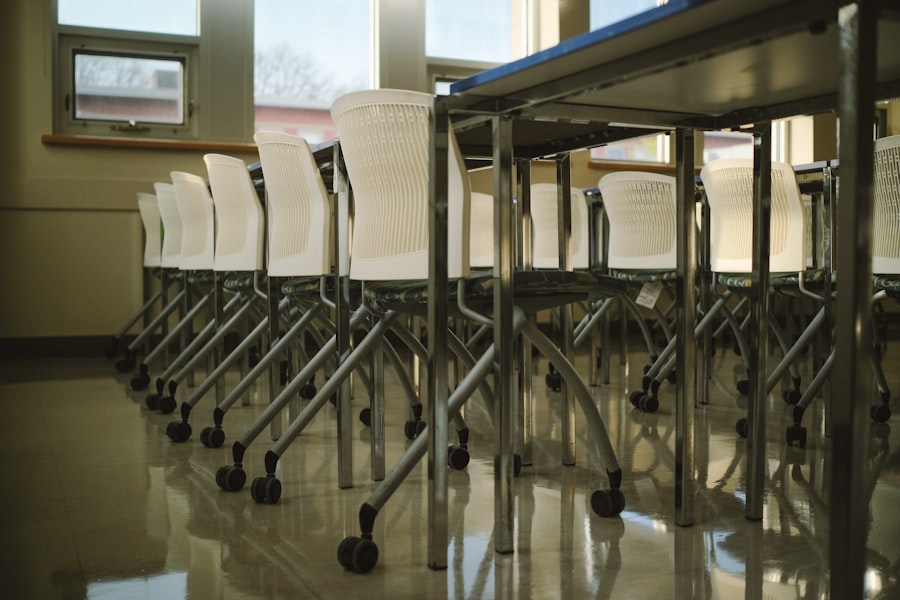
- By: admin
- Category: Commercial Floor Cleaning Machines
- 0 comment
In the realm of education, the significance of cleanliness often goes unnoticed, yet it plays a pivotal role in shaping the learning environment. Schools are not merely institutions for academic learning; they are spaces where students spend a considerable portion of their day, engaging in various activities that require focus and concentration. A clean school environment fosters a sense of pride and responsibility among students and staff alike, creating a conducive atmosphere for learning.
As we delve into the multifaceted importance of cleanliness in schools, it becomes evident that maintaining high standards of hygiene is not just a matter of aesthetics but a fundamental aspect of educational success. The implications of cleanliness extend beyond mere appearances. A well-maintained school can significantly influence student behaviour, academic performance, and overall health.
In an age where health concerns are paramount, particularly in light of recent global events, the need for rigorous cleaning protocols has never been more critical. This article will explore how cleanliness impacts student health, prevents the spread of illnesses, enhances wellbeing, and ultimately contributes to a more effective learning environment. Please feel free to get in touch with us through our Contact Us page.
Summary
- Cleanliness in schools is crucial for creating a safe and healthy environment for students to learn and thrive.
- Maintaining cleanliness in schools directly impacts student health by reducing the risk of illness and promoting overall well-being.
- Cleanliness plays a significant role in preventing the spread of illnesses such as colds, flu, and stomach bugs among students and staff.
- The connection between cleanliness and student wellbeing is evident in the positive impact it has on their physical and mental health.
- Clean facilities are essential for student learning as they provide a conducive environment for concentration and academic success.
The Impact of Cleanliness on Student Health
The health of students is intrinsically linked to the cleanliness of their school environment. Research has consistently shown that a clean school can reduce the incidence of illness among students. Dust, allergens, and bacteria thrive in unclean spaces, leading to respiratory issues and other health complications.
For instance, schools that implement regular cleaning schedules and maintain proper ventilation systems often report lower rates of absenteeism due to illness. This is particularly crucial in primary schools, where young children are more susceptible to infections and allergies. Moreover, the psychological impact of cleanliness on student health cannot be overlooked.
A tidy and well-organised environment can reduce stress and anxiety levels among students. When students feel comfortable in their surroundings, they are more likely to engage positively with their peers and teachers. For example, a school that prioritises cleanliness may see an increase in student participation in extracurricular activities, as students feel more at ease in their environment.
Thus, the correlation between cleanliness and student health is clear: a clean school is not only a healthier place but also a more supportive one for academic and social development.
The Role of Cleanliness in Preventing the Spread of Illnesses

In recent years, the importance of cleanliness in preventing the spread of illnesses has gained unprecedented attention. Schools are often hotspots for germs due to the close proximity of students and shared facilities. Regular cleaning and disinfection practices are essential in mitigating the risk of outbreaks.
For instance, during flu season or following a viral outbreak, schools that adhere to stringent cleaning protocols can significantly reduce transmission rates among students and staff. Implementing effective cleaning strategies involves more than just surface cleaning; it requires a comprehensive approach that includes high-touch areas such as doorknobs, light switches, and shared equipment. Schools that invest in professional cleaning services often find that their efforts lead to healthier environments.
For example, a secondary school in Melbourne adopted a rigorous cleaning regimen during the COVID-19 pandemic, which included frequent sanitisation of communal areas. As a result, they reported minimal cases of illness among students during that period. This case exemplifies how proactive measures can create a safer educational environment.
The Connection Between Cleanliness and Student Wellbeing
Cleanliness is not solely about hygiene; it also plays a crucial role in fostering student wellbeing. A clean school environment can enhance students’ emotional and mental health by promoting feelings of safety and belonging. When students enter a clean classroom or common area, they are more likely to feel respected and valued, which can lead to improved self-esteem and motivation.
Furthermore, the aesthetic appeal of a clean school can inspire creativity and engagement among students. Brightly lit, tidy classrooms with organised materials encourage students to take pride in their work and surroundings. For instance, schools that incorporate student input into maintaining cleanliness—such as through clean-up days or art projects—often see increased ownership over their environment.
This sense of responsibility not only contributes to cleanliness but also fosters a community spirit among students.
The Importance of Clean Facilities for Student Learning
The link between clean facilities and effective learning outcomes is well-documented. Research indicates that students perform better academically in clean environments. A clutter-free classroom allows for better focus and concentration, enabling students to absorb information more effectively.
Additionally, clean facilities reduce distractions that can hinder learning processes. Moreover, access to clean restrooms and dining areas is essential for maintaining student morale and comfort throughout the school day. When facilities are well-maintained, students are more likely to feel at ease during breaks and lunchtime, which can positively impact their overall school experience.
For example, a primary school in Sydney revamped its cleaning protocols for its cafeteria and restrooms, resulting in increased student satisfaction and participation in school meals. This change not only improved hygiene but also encouraged healthier eating habits among students.
Strategies for Maintaining Cleanliness in Schools

To ensure that cleanliness is upheld consistently within schools, it is vital to implement effective strategies tailored to the unique needs of each institution. One successful approach is establishing a dedicated cleaning team responsible for maintaining high standards across all areas of the school. This team should be trained in best practices for cleaning and sanitisation, ensuring that they are equipped with the knowledge necessary to tackle various challenges.
In addition to professional cleaning services, schools can engage students and staff in maintaining cleanliness through educational initiatives. Workshops on hygiene practices can empower students to take responsibility for their environment while fostering a culture of cleanliness within the school community. For instance, some schools have introduced peer-led initiatives where older students mentor younger ones on maintaining tidy classrooms and communal areas.
Such programmes not only promote cleanliness but also encourage leadership skills among students.
The Responsibility of Students and Staff in Maintaining Cleanliness
While professional cleaning services play an essential role in maintaining cleanliness within schools, it is equally important for both students and staff to take an active role in this endeavour. Encouraging a sense of ownership among students can lead to lasting behavioural changes regarding cleanliness. Simple actions such as disposing of waste properly or keeping personal spaces tidy can collectively contribute to a cleaner environment.
Staff members also have a crucial role to play in modelling good hygiene practices for students. Teachers can incorporate lessons on cleanliness into their curriculum, emphasising its importance not only within the school but also in everyday life. By fostering an environment where everyone understands their responsibility towards cleanliness, schools can create a culture that values hygiene as an integral part of the educational experience.
The Ongoing Importance of Cleanliness in Schools
In conclusion, the importance of cleanliness in schools cannot be overstated. It impacts student health, prevents the spread of illnesses, enhances wellbeing, and supports effective learning outcomes. As we navigate an increasingly complex world where health concerns are paramount, prioritising cleanliness within educational institutions is essential for fostering safe and productive environments.
By implementing robust cleaning strategies and encouraging shared responsibility among students and staff, schools can create spaces that not only look good but also promote health and wellbeing. As we move forward, let us remember that cleanliness is not merely an operational necessity; it is a cornerstone of educational success that shapes the future of our students. **FAQ Section** 1.
**Why is cleanliness important in schools?**
Cleanliness is vital in schools as it directly impacts student health, wellbeing, and academic performance by creating a safe and conducive learning environment. 2. **How can schools prevent the spread of illnesses?**
Schools can prevent illness by implementing regular cleaning schedules, focusing on high-touch areas, and promoting good hygiene practices among students and staff.
3. **What role do students play in maintaining cleanliness?**
Students play an essential role by taking responsibility for their personal spaces and participating in initiatives that promote cleanliness within the school community. 4.
**How does cleanliness affect student wellbeing?**
A clean environment fosters feelings of safety and belonging among students, which can enhance their emotional health and motivation to learn. 5. **What strategies can schools adopt for better cleanliness?**
Schools can establish dedicated cleaning teams, engage students through educational initiatives on hygiene practices, and encourage staff to model good behaviours regarding cleanliness.
FAQs
What are the benefits of cleanliness in schools for student health and wellbeing?
Cleanliness in schools is important for student health and wellbeing as it helps to prevent the spread of germs and illnesses, reduces the risk of infections, and creates a safe and hygienic environment for learning.
How does cleanliness in schools contribute to student attendance and academic performance?
A clean and hygienic school environment can lead to improved student attendance as it reduces the risk of illness and absenteeism. Additionally, a clean and well-maintained school can create a positive and conducive atmosphere for learning, which can positively impact academic performance.
What are some common areas in schools that require regular cleaning and maintenance?
Common areas in schools that require regular cleaning and maintenance include classrooms, restrooms, cafeterias, gymnasiums, playgrounds, and school buses. These areas are prone to high levels of student traffic and therefore require regular attention to maintain cleanliness and hygiene.
How can schools promote cleanliness and hygiene among students?
Schools can promote cleanliness and hygiene among students by implementing regular cleaning schedules, providing handwashing facilities and hand sanitizers, educating students about the importance of cleanliness, and encouraging good hygiene practices such as proper handwashing and cough etiquette.
What role do school staff and administrators play in maintaining cleanliness in schools?
School staff and administrators play a crucial role in maintaining cleanliness in schools by overseeing cleaning and maintenance activities, ensuring that cleaning supplies and facilities are readily available, and setting and enforcing cleanliness standards and protocols. They also serve as role models for students in promoting good hygiene practices.
